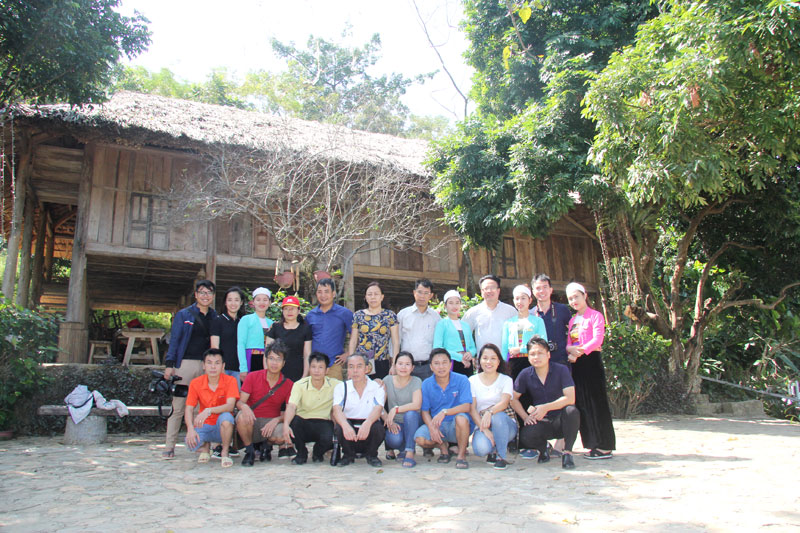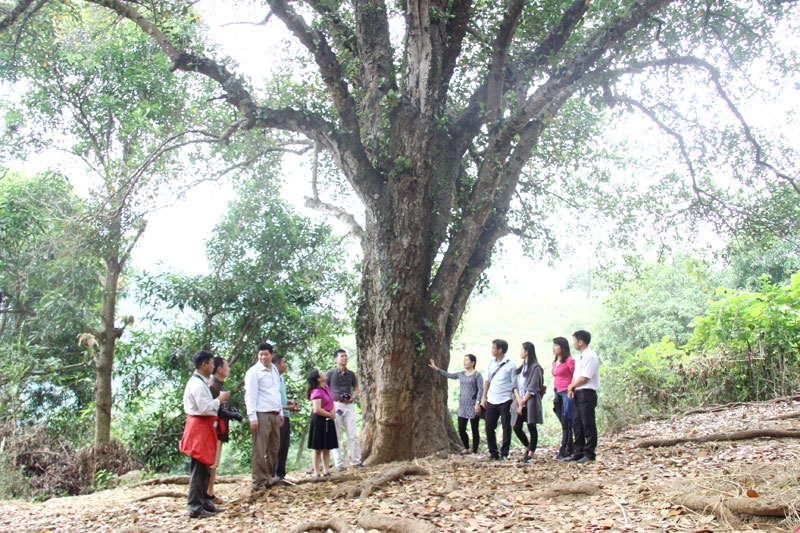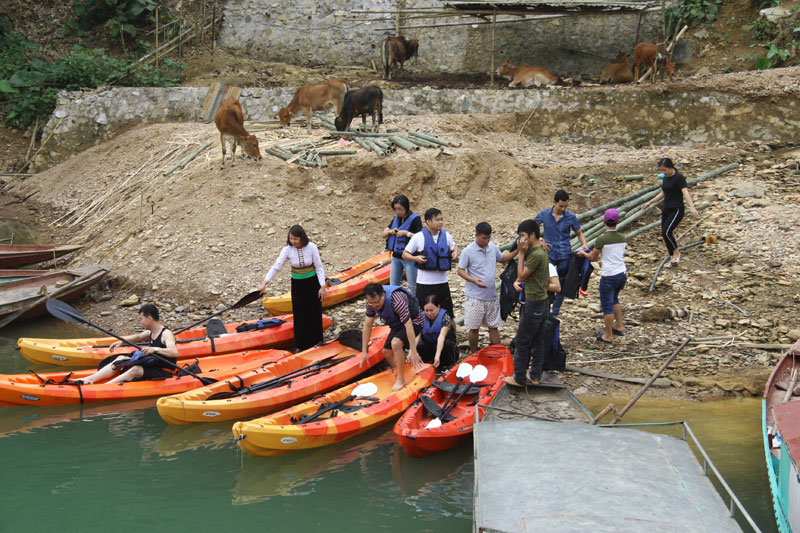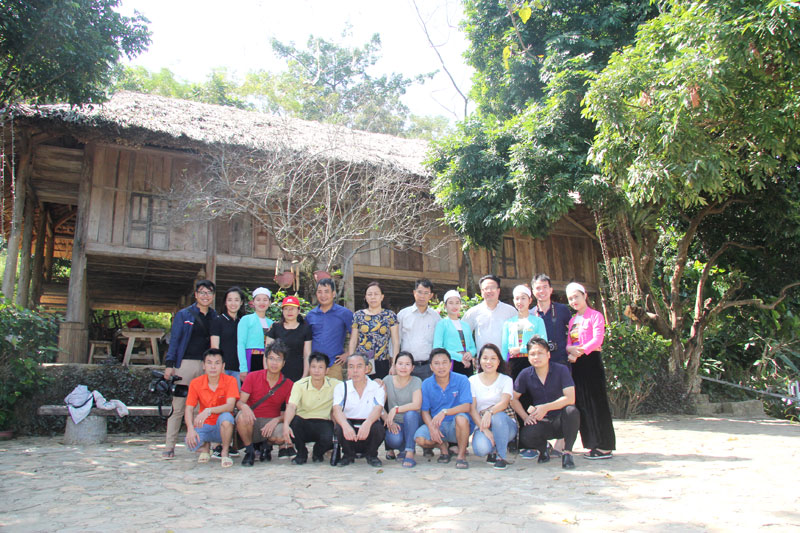
(HBO) - From 14th to 16th November, The Department of Culture, Sports and Tourism of Hoa Binh, Son La, Dien Bien and Lai Chau provinces jointly organized the survey to construct an inter-lake waterway travel within Hoa Binh - Son La - Lai Chau Hydropower.
The delegation conducted the survey to evaluate the potential and advantages of communal tourism development in Ngam village, Song Pe Ward, Bac Yen District (Son La). There are 103 households living in the village, 99% of which are Muong ethnic with the potential development of tourism such as unique customs, plentiful ecosystems, handicraft products and so on. This site was reviewed that it was one of the fully potential convergence spots for the public tourism development in Son La province.
The deputation of 4 provinces including Hoa Binh, Son La, Dien Bien and Lai Chau conducted a practical survey in Ngam Village, Song Pe Ward, Bac Yen District (Son La).
Then, the deputation also evaluated the entire waterway in Hoa Binh Lake area at the locations having the advantages of tourism resources and being forming the products of ecological, spiritual and communal tourism such as The Temple of Bo Waterfall Princess, Thung Nai Ward (Cao Phong); Da Bia Commune and Dua Island, Tien Phong Ward (Da Bac) and Ngoi Village, Ngoi Hoa Ward (Tan Lac).
The team members experientially rowed a kayak at Da Bia Commune, Tien Phong Ward (Da Bac).
The program of surveying and building the inter-lake waterway route assessed the potential and current status of tourism resources in Hoa Binh Lake, implemented the supported orientations and called for investment in the construction of typical tourism products in each region. At the same time, it also connectively built the first waterway on Da River, from Hoa Binh to Son La, Dien Bien and Lai Chau.
The delegation took the memorial photos at Ngoi Commune, Ngoi Hoa Ward (Tan Lac).
A diverse chain of eco-tourism and resort destinations concentrated in Hoa Binh city and the districts of Tan Lac, Da Bac, and Luong Son… Along with the launch of several key high-quality resort tourism projects, these developments have reshaped the landscape and enhanced the appeal of Hoa Binh as a travel destination.
Boasting diverse terrain, a mild climate, and rich natural resources, Cao Phong district is increasingly asserting its place on Vietnam’s tourism map, attracting both domestic and foreign visitors. The district is renowned for its stunning landscapes, majestic mountains, a crystal-clear hydropower lake, and the unique cultural identity of local ethnic groups.
With its pristine landscapes, unique cultural heritage of Muong ethnic minority, and an expanding range of visitor experiences, Tan Lac district of Hoa Binh has fast become a captivating destination for both domestic and international tourists.
Until now, Sung village in Cao Son commune, Da Bac district remains the only Dao ethnic community in Hoa Binh province to develop a community-based tourism model. Beyond its untouched natural landscapes, cultural identity serves as the cornerstone attraction for visitors.
Alongside the diverse cultural identities of the Kinh, Muong, Tay, Thai, Dao, and Mong ethnic people, Hoa Binh province is also renowned as the "capital" of the northwestern Vietnamese cuisine, offering unique and distinctive dishes. At festivals, during Lunar New Year (Tet), or on significant family or community occasions, special dishes are prepared, leaving a lasting impression on visitors.
A Phong Linh (Yellow Tabebuia) flower garden in Thang village, Thach Yen commune, Cao Phong district is currently in full bloom, drawing a large number of visitors.





